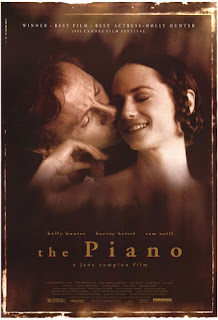May 4th: ALL THAT JAZZ (Bob Fosse, 1979)
NOTE: This film will be projected in the high-definition Blu-ray format.
An overworked, pill-popping theatre director juggles the editing of his feature film with rehearsals of a new Broadway musical, as well as the various women in his life.
Bob Fosse worked as a dancer in various theatre and television productions during the 1940s-50s before signing with film studio MGM, where he appeared in several notable musicals before deciding to work on Broadway as a choreographer. He won his first of 8 Tony Awards for choreography (a record) with his debut production, The Pajama Game. He continued working on notable titles as well as their Hollywood film versions, and by the early 1960s was directing for the stage as well.
Fosse made the move to film directing with an adaptation of his Broadway hit Sweet Charity (1969) and his second effort Cabaret struck gold, the film winning 8 Oscars including Best Director for Fosse. He then made a biopic of groundbreaking comedian Lenny Bruce, and his struggles completing that film (particularly the editing) while trying to mount the first Broadway production of Chicago would serve as the basic for the autobiographical All That Jazz.
Another influence was Federico Fellini's 8½, and Fosse would use that film's cinematographer Giuseppe Rotunno. The film was shot entirely in New York City, in local studios as well as the Palace Theatre on Broadway.
In the lead role Fosse went against-type by casting Roy Scheider (Jaws), who had little-to-no experience singing and dancing, focusing more on the actor's intensity. He's joined by Jessica Lange, stage actress Leland Palmer, and Fosse's frequent collaborator and former partner Ann Reinking, essentially playing herself. Also appearing are John Lithgow, and dancer Ben Vereen, who had won a Tony for the Fosse-directed Pippin (1973).
Like in Cabaret, the film showcases many of Fosse's innovations and trademarks in choreography: "jazz hands", angular but fluid limbs, shoulder and hip rolling, snapping, as well as the use of bowler hats, canes, and chairs used as stage props. New to his bag of tricks is a frenetic, fast-cutting editing style, which would soon become the norm with the rise of music videos in the 1980s.
The film was a considerable success, making 3x its production cost (despite going over budget and requiring funding from another studio), and earning mostly positive reviews. It received 9 Academy Award nominations including Best Picture, Director and Original Screenplay for Fosse, Actor, and Cinematography, and won Oscars for its Art Direction, Costume Design, Editing, and Original Song Score. It went on to win the top prize (Palme d'Or) at the 1980 Cannes Film Festival.
Running time is 2 hours.
An overworked, pill-popping theatre director juggles the editing of his feature film with rehearsals of a new Broadway musical, as well as the various women in his life.
Bob Fosse worked as a dancer in various theatre and television productions during the 1940s-50s before signing with film studio MGM, where he appeared in several notable musicals before deciding to work on Broadway as a choreographer. He won his first of 8 Tony Awards for choreography (a record) with his debut production, The Pajama Game. He continued working on notable titles as well as their Hollywood film versions, and by the early 1960s was directing for the stage as well.
Fosse made the move to film directing with an adaptation of his Broadway hit Sweet Charity (1969) and his second effort Cabaret struck gold, the film winning 8 Oscars including Best Director for Fosse. He then made a biopic of groundbreaking comedian Lenny Bruce, and his struggles completing that film (particularly the editing) while trying to mount the first Broadway production of Chicago would serve as the basic for the autobiographical All That Jazz.
Another influence was Federico Fellini's 8½, and Fosse would use that film's cinematographer Giuseppe Rotunno. The film was shot entirely in New York City, in local studios as well as the Palace Theatre on Broadway.
In the lead role Fosse went against-type by casting Roy Scheider (Jaws), who had little-to-no experience singing and dancing, focusing more on the actor's intensity. He's joined by Jessica Lange, stage actress Leland Palmer, and Fosse's frequent collaborator and former partner Ann Reinking, essentially playing herself. Also appearing are John Lithgow, and dancer Ben Vereen, who had won a Tony for the Fosse-directed Pippin (1973).
Like in Cabaret, the film showcases many of Fosse's innovations and trademarks in choreography: "jazz hands", angular but fluid limbs, shoulder and hip rolling, snapping, as well as the use of bowler hats, canes, and chairs used as stage props. New to his bag of tricks is a frenetic, fast-cutting editing style, which would soon become the norm with the rise of music videos in the 1980s.
The film was a considerable success, making 3x its production cost (despite going over budget and requiring funding from another studio), and earning mostly positive reviews. It received 9 Academy Award nominations including Best Picture, Director and Original Screenplay for Fosse, Actor, and Cinematography, and won Oscars for its Art Direction, Costume Design, Editing, and Original Song Score. It went on to win the top prize (Palme d'Or) at the 1980 Cannes Film Festival.
Running time is 2 hours.










Comments
Post a Comment